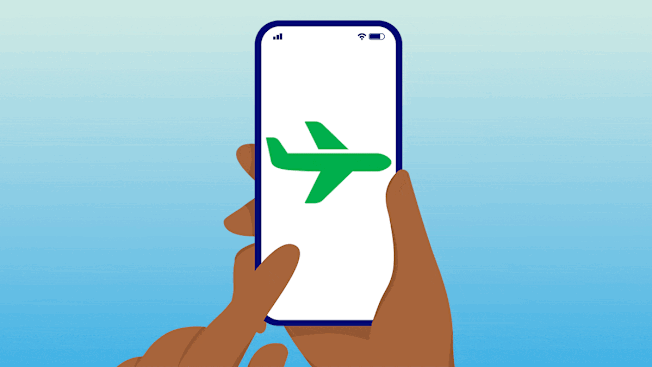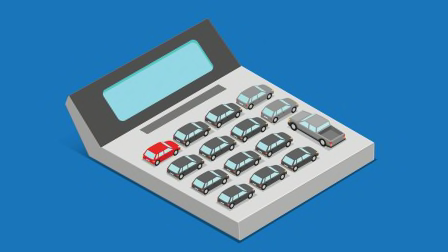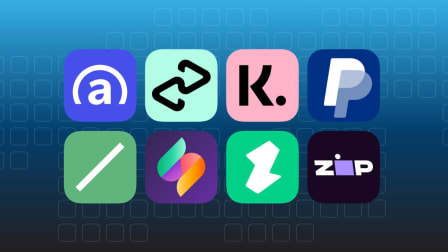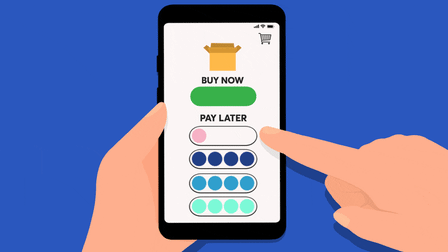Buy Now, Pay Later Loans From Affirm, Afterpay, and Uplift Are a Risky Way to Pay for Flights, Hotels, and Cruises
Understand the potential downsides before you sign on

In February 2024, Heather Furgang and her husband wanted to book a Caribbean cruise set to sail in early 2025 but didn’t want to max out their credit cards to cover the $4,000 price. So Furgang opted to finance the trip using Uplift, a “buy now, pay later” company that offers short-term loans for travel purchases. (In December 2024, Uplift announced it was changing its name to Flex Pay.)
The Good and Bad of Buying Now and Paying Later
The buy now, pay later industry is best known for its no-interest, no-fee “pay-in-four” loans, which consumers pay back in four installments over about two months. Because pay-in-fours don’t require the kind of “hard” credit check that can affect one’s credit score, these loans are often approved in seconds.
Buy now, pay later companies also offer more conventional loans that are typically larger, can run up to 60 months, involve interest and fees, and sometimes do require a credit check—but, as in Furgang’s case, the approval process can be almost as fast and seamless as with a pay-in-four.
Indeed, speed and convenience are the hallmarks of all buy now, pay later loans, which are now offered as part of the standard checkout and payment process by countless online and in-person retail and service providers. More than 95 million Americans took out a BNPL loan in 2023—37 percent of adults, according to a February 2024 report by business data firm PYMNTS Intelligence.
Travel has been one of the industry’s fastest-growing areas in recent years. Some of the biggest BNPL companies, including Affirm, Afterpay, Klarna, and Uplift, have expanded into loans for flights, hotels, cruises, car rentals, and vacation packages, and nearly every major airline, hotel operator, and online booking site now offers at least one buy now, pay later option as part of their online payment process.
The consumer benefits of buy now, pay later can mostly be summed up in the phrase “access to credit.” Whether or not they require a credit check, BNPL loans are often used by those who have tapped out their credit cards and other credit options, have poor credit histories, or have no credit history at all. They can be a financial lifeline for anyone lacking the cash to cover urgent spending needs, including travel expenses. That’s why Kimberly Pfeiffer, owner of Bae Moon Travel in Wichita, Kan., says she recently partnered with Uplift to offer BNPL financing to her clients. “Sometimes travel is unexpected,” she says. “Perhaps there’s a death in the family, or someone is sick and in the hospital, and the client just doesn’t have the funds” to get where they need to be.
In addition, if consumers use them carefully and selectively, buy now, pay later loans can sometimes fulfill their advertised promise of charging no fees and no or low interest.
Still, the risks may outweigh the benefits, as CR has noted in a previous article and report.
For example, some consumers believe they’re signing up for a no-fee, no-interest loan but end up agreeing to a loan with both. Others are drawn in by an advertised interest rate but are offered a higher one after they apply. Furgang, for example, says she was initially offered a rate of 19.99 percent but ended up borrowing at 30 percent.
Uplift did not respond to CR’s questions about how the company handles situations like the one Furgang faced.
Still, other consumers take on multiple buy now, pay later loans, do a poor job of juggling all the payment schedules, and end up getting hit by late fees and/or damaging their credit score. “The more loans a person has, the more likely they’ll be late paying on at least one of them,” says CR’s Bell.
And some consumers, seemingly lured by big-dollar offers of easy credit, simply spend more than they intend or can afford to pay back, especially when interest is added in. In fact, Affirm tells prospective merchant partners that customers who use BNPL loans to book travel spend an average of 48 percent more than other customers; Uplift says its customers spend an average of 22 percent more.
The Difficulty With Disputes
But perhaps the biggest risk of using BNPL loans for travel has to do with so-called chargeback rights. When you make a purchase with a credit card, federal law gives you a clear right to dispute the charges and demand a refund if the product isn’t delivered, if what you get isn’t what was promised, or if you return the item or cancel the service. In short, if you dispute a charge in writing, the credit card company must allow you to withhold payment while it conducts an investigation, typically within 60 days.
Until recently, buy now, pay later lenders have not been required to provide chargeback rights when you buy something with a BNPL loan, so BNPL companies did not have the same obligation to intervene on your behalf. “We know from consumer complaints that some people with buy now, pay later loans have been forced to spend an inordinate amount of time trying to chase down the refund, and sometimes they never get it,” says Bell.
A nationally representative CR survey (PDF) of 2,013 U.S. adults in August 2022 found that 28 percent of Americans who used a buy now, pay later loan had at least one problem, including difficulties getting a refund and stopping loan payments after they returned an item.
This is an especially acute problem when it comes to travel purchases because travel plans are so frequently changed or disrupted by weather, air traffic congestion, and equipment problems, says Bill McGee, consumer travel advocate and senior fellow for aviation and travel at the American Economic Liberties Project. “You could be stuck making payments, for a while at least, for flights or cruises that you never took and hotels you never stayed in,” he says.
In May 2024, the Consumer Financial Protection Bureau tried to address this issue with an "interpretive rule" categorizing BNPL lenders as credit card providers, thus requiring them to give customers chargeback rights.
But the rule applies only to pay-in-four loans, says Nadine Chabrier, senior litigation and policy counsel at the Center for Responsible Lending. And the CFPB said when it announced the rule that buy now, pay later lenders have time to transition to the new rules and isn’t yet penalizing companies that don’t comply.
At the same time, in October 2024, the Financial Technology Association, a financial technology trade association, challenged the ruling in federal court, arguing that the CFPB had exceeded its authority. The case is pending.
Even so, “if consumers are complaining that chargeback rights are not happening, that is a huge concern,” says Chabrier. “You can report it to the CFPB and try to get it addressed.”
4 Common Problems and What to Do
When we checked the CFPB consumer complaint database this fall, we found hundreds of travel-related buy now, pay later stories. Below are some commonly reported problems, plus tips on how to handle them.
The problem: A refund is pending, but your loan payments are still due.
One Florida consumer says she used a buy now, pay later loan to finance an August 2022 trip to watch her son play in an out-of-town sporting event but cancelled when his team didn’t make the playoffs. But even after weeks of emails, the refund she was owed still hadn’t reached the lender, which continued debiting her account—for a total of $820. “I have been going back and forth with [the travel company] trying to get the money refunded,” the consumer wrote.
The advice: Contact the BNPL lender, explain the situation, and send in documentation that shows your refund is underway. Then, ask for your loan payments to be paused until the refund is received, suggests CR’s Bell.
The problem: You thought your loan was paid in full, but unpaid fees remain.
Even if you do manage to get a merchant to send a refund to your buy now, pay later lender, it doesn’t always close out the loan. That’s because the merchant might have charged additional fees—cancellation fees are especially common in the travel industry—or interest may have accrued since the initial transaction.
Complaints in the CFPB database suggest that relatively small shortfalls of this kind can end up triggering additional late fees and wind up being reported as delinquent accounts to the credit bureaus, which can wreak havoc on your credit score. “It is not fair that I suffer a hurt credit score for seven years because I didn’t know that an account I paid off accrued $4.00 of interest,” wrote one New York consumer.
The advice: Follow up with your lender—via phone, website, or app—to make sure your balance is zeroed out, says CR’s Bell. And ask them to send a confirmation in writing.
The problem: You can’t get a human on the phone.
Numerous frustrated consumers complained of getting trapped in their BNPL company’s automated customer service system, which couldn’t resolve their problem.
The advice: Several consumers posted hacks on the CFPB database. One successfully reached a live agent by calling from a phone number that wasn’t associated with his loan. Another found that choosing the “payments” option was a faster way to get connected with a human. Furgang says after several tries she and her husband realized if they told the automated phone system that their reason for calling was “I have a different issue” or “I have another problem,” then they were connected to a human customer service agent.
The problem: You’ve talked to both the travel company and the lender, and their explanations don’t match.
Numerous CFPB complaints tell stories of miscommunication: The buy now, pay later lender says it hasn’t been refunded, while the travel provider says it already sent the money or that it’s waiting for more information from the lender.
The advice: Get all the parties on the phone at one time. Furgang and her husband said it took over a dozen calls to Uplift before they reached an agent who was willing to get on a conference call. “We ended up on the phone with this guy from Uplift for probably 45 minutes,” recalls Furgang. ”He was trying so hard for us.”




















